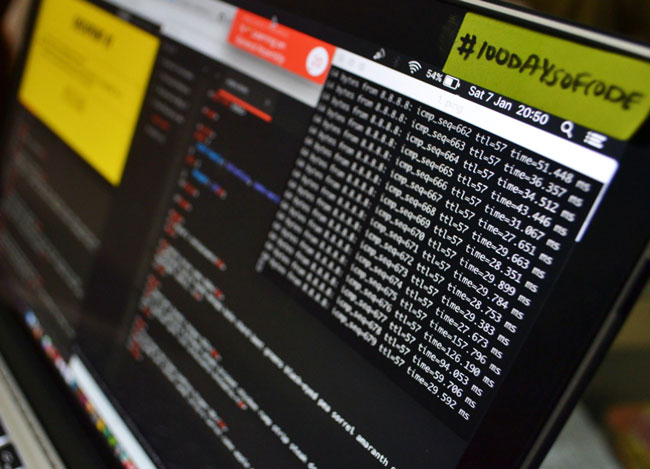Organizations are increasingly adopting SAP S/4HANA as their primary ERP system and taking advantage of cloud-native applications to simplify processes and reduce the need for IT staff. Unfortunately, these strategic shifts have important implications for access control, risk management and compliance (GRC). To ensure proper SAP security, an efficient audit process is essential.
The importance of governance, risk and compliance (GRC) and identity access management (IAM)
Organizations use GRC and IAM systems to achieve certain business objectives. These typically include ensuring SAP security, increasing efficiency, regulatory compliance and enhancing corporate accountability for access risk management. To maximize the effectiveness of a GRC or IAM solution, organizations should take an integrated approach that assesses the importance of each objective to them.
Soterion’s Effective GRC Pyramid provides organisations with a holistic approach to GRC management. This pyramid divides the various GRC operations into manageable components and emphasises their interdependence to help companies achieve their GRC goals.

Policies and procedures
Policies and procedures form the basis for all GRC activities. Without proper policies and procedures, users within the organisation do not know what access risk management activities need to be done, how they should be done and how often they should be done.
By defining detailed policies and procedures, an organisation can establish a standard procedure for managing access risk and set expectations for the use of the access control and GRC solution.
SAP role design and rule set for access risk
A well-designed SAP role design is the cornerstone for all GRC and IAM systems. To increase corporate adoption and accountability, organisations should address SAP role design and the SAP access risk rule set. A thorough role design is essential as it is the foundation for all GRC and IAM operations.
The change to the standard rule set is essential for organisations to monitor the risks that affect them. In addition, this change serves as an educational tool to inform corporate users about potential threats in their area of responsibility.
Security aspects of migrating to SAP S/4HANA
Many companies are in the early stages of migrating to SAP S/4HANA. Therefore, now is the ideal time to check and fix potential security issues. To avoid expensive post-migration remediation, companies should address potential security issues before implementing their new system.
Due to the complexity of SAP S/4HANA migrations with the Fiori layer, companies need to choose appropriate role strategies that balance security and simplicity. In addition, companies should involve SAP security specialists in the role development process and prioritise ongoing Business as Usual (BAU) SAP security support and maintenance.
Data protection and SAP S/4HANA
Companies should use the SAP S/4HANA project to consider the data protection laws that apply to their region. Many data protection laws, such as GDPR, require “privacy by design” to be considered during the SAP S/4HANA roll design project.
Recommendations for improving SAP security
Companies can improve security and compliance by:
Adopting a holistic approach to access management and compliance by investing in GRC and training team members on SoD and access risks.
Tailoring access rights to individual needs and ensuring that the right people have the appropriate access.
Ensure role design is done with a security perspective by involving IT and business teams in reviewing and discussing regulations and their implications.
Improve SAP security through risk analysis and resolution
Regular risk analysis is essential to maintaining your organisation’s SAP security posture. The risk analysis process uncovers existing vulnerabilities and access risks and enables you to remediate them before they become major problems. Remediation is the process of removing identified threats, which may include changing user roles, updating access rights or adding additional security measures.

Some actions to improve SAP security through risk analysis and remediation are:
Conduct risk assessments on a regular basis: Establish a regular schedule for conducting regular risk assessments to identify potential threats to your SAP environment. Regular reviews help identify vulnerabilities early, giving your organisation the opportunity to address issues promptly and take proactive measures.
Create a remediation plan: Once risks are identified, create an action plan to address them. Assign responsibilities, set timelines and establish milestones so that your company follows through with the remedial actions.
Monitor progress and adjust strategies: Stay on top of your remediation plan by continuously monitoring progress and making necessary adjustments as needed. Continuous monitoring of your SAP environment gives you the advantage of staying ahead of new threats and maintaining a strong security posture.
Train employees on SAP security best practices: Make sure your employees understand the importance of SAP security and give them the tools and knowledge to comply with best practices. Regular training can help raise security awareness and foster a culture of compliance.
Review and update access controls: Regularly review user access rights to ensure that employees have the correct permissions for their roles. Update access controls according to the current needs of the business when staff turnover occurs or job responsibilities change.
Implement Segregation of Duties (SoD): Create and enforce SoD policies to prevent excessive access rights and potential conflicts of interest. SoD reduces the risk of fraud or unauthorised interference by ensuring that no single person has complete control over key business processes.
Automate security processes: Use tools and technologies to automate security tasks such as access provisioning, risk assessment and role design. Automation reduces the risk of human error and can simplify security management.
Collaboration between IT and business teams
To ensure SAP security, IT and business teams must collaborate effectively. This includes open communication, a shared understanding of security risks and objectives, and joint decision-making. By working together, these groups can develop strategies that align with business objectives while mitigating risk.
The key characteristics of successful collaboration between IT and business teams include:
Creating a shared vision: Both IT and business teams should recognise the importance of SAP security and work together to develop an innovative plan for protecting data and systems in their organisations.
Develop a common language: IT and business teams should agree on an understandable language to discuss and address SAP security risks. This common understanding will help narrow the gap between technical jargon and everyday business terms, leading to more efficient communication and decision-making processes.
Promote a culture of safety: Foster a safety environment in your organisation through awareness, training and collaboration. A strong safety culture ensures that all employees prioritise safety and work together to protect the company’s assets.


